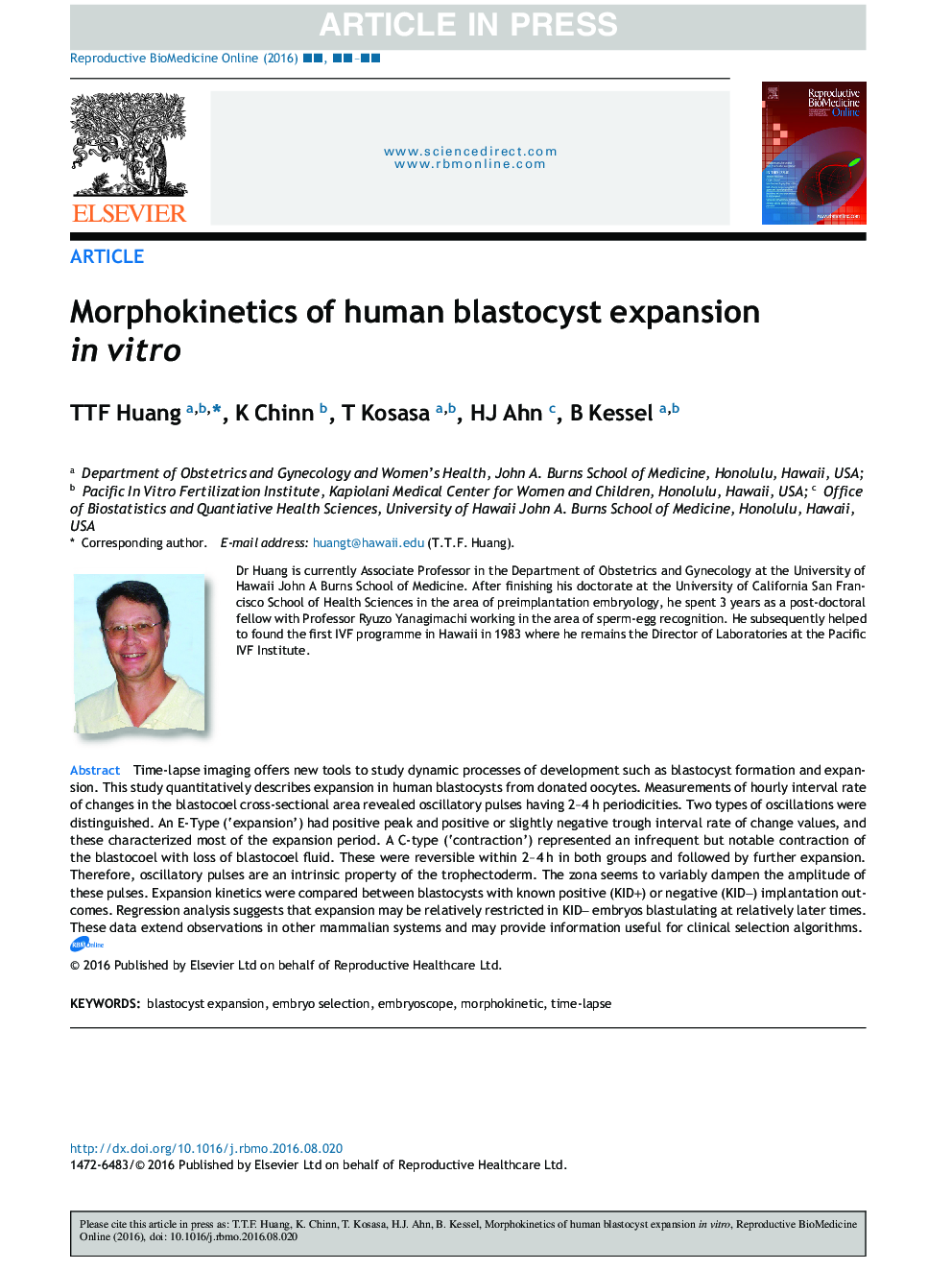| Article ID | Journal | Published Year | Pages | File Type |
|---|---|---|---|---|
| 5696825 | Reproductive BioMedicine Online | 2016 | 9 Pages |
Abstract
Time-lapse imaging offers new tools to study dynamic processes of development such as blastocyst formation and expansion. This study quantitatively describes expansion in human blastocysts from donated oocytes. Measurements of hourly interval rate of changes in the blastocoel cross-sectional area revealed oscillatory pulses having 2-4âh periodicities. Two types of oscillations were distinguished. An E-Type ('expansion') had positive peak and positive or slightly negative trough interval rate of change values, and these characterized most of the expansion period. A C-type ('contraction') represented an infrequent but notable contraction of the blastocoel with loss of blastocoel fluid. These were reversible within 2-4âh in both groups and followed by further expansion. Therefore, oscillatory pulses are an intrinsic property of the trophectoderm. The zona seems to variably dampen the amplitude of these pulses. Expansion kinetics were compared between blastocysts with known positive (KID+) or negative (KIDâ) implantation outcomes. Regression analysis suggests that expansion may be relatively restricted in KIDâ embryos blastulating at relatively later times. These data extend observations in other mammalian systems and may provide information useful for clinical selection algorithms.
Related Topics
Health Sciences
Medicine and Dentistry
Obstetrics, Gynecology and Women's Health
Authors
T.T.F. Huang, K. Chinn, T. Kosasa, H.J. Ahn, B. Kessel,
